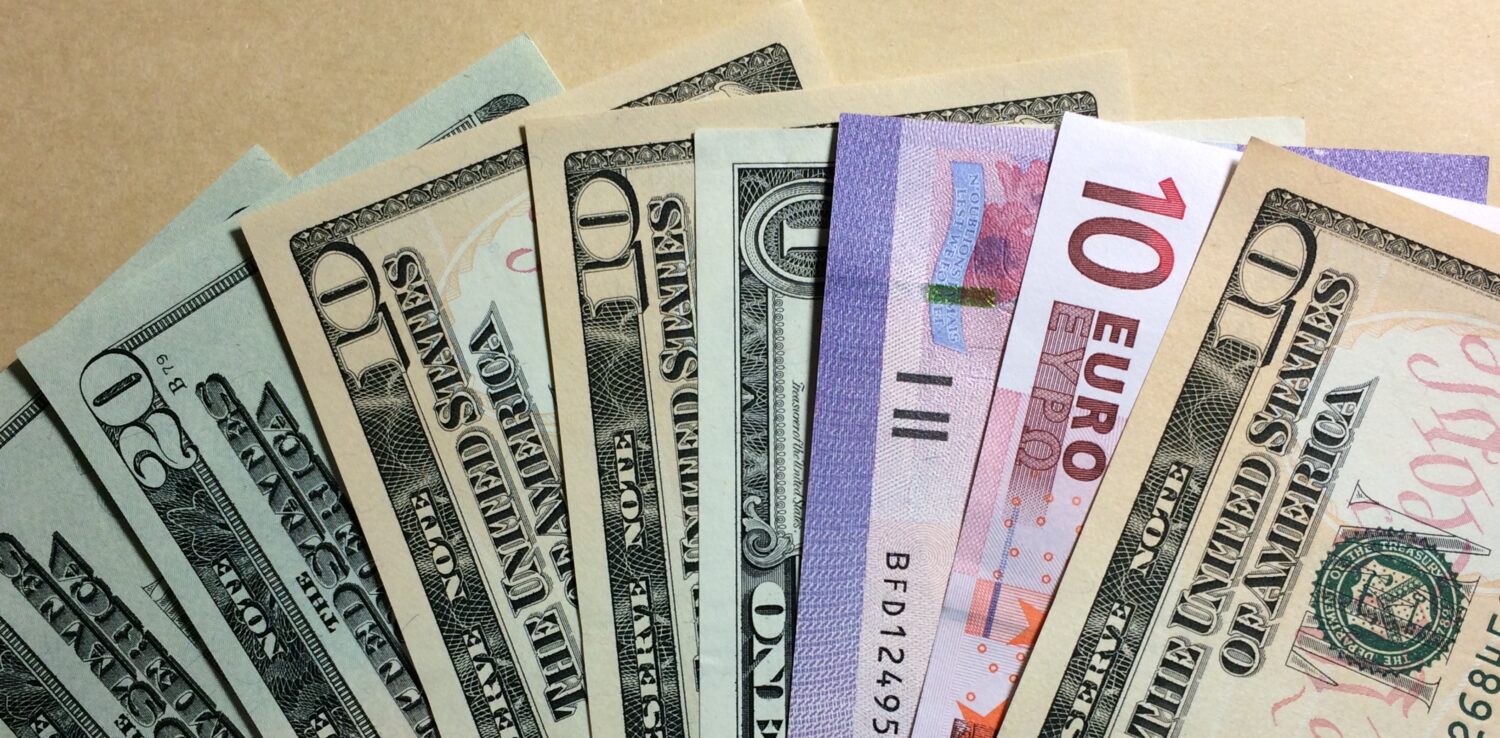“Western Tokyo”, Yamaguchi City ranked third in the NYT’s ranking of the most noteworthy cities in Japan
Every year at the beginning of the year, the New York Times, a well-known U.S. newspaper, announces its selection of 52 places to go in that year, 202X.
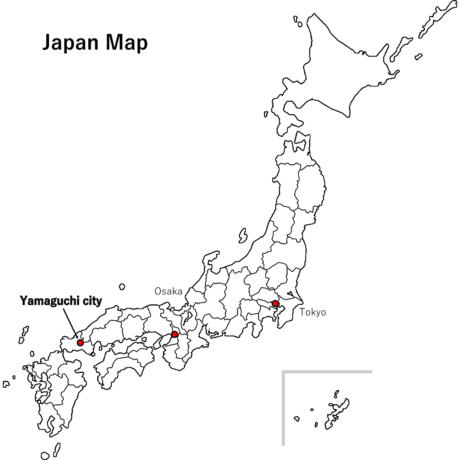
In the January announcement, they announced “52 Places to Go in 2024” as travel destinations, and this year they chose Yamaguchi City from Japan. Yamaguchi City was introduced as the third destination following various places in North America where a total solar eclipse can be seen, and Paris, France. “Yamaguchi City is often called the ‘Kyoto of the West,’ which is interesting,” it explains.
The city’s reputation for being interesting with little tourism pollution (not OVER tourism) has spread.
City introduction
A New York Times article referred to Yamaguchi City as “Western Tokyo” and described it as “more interesting than Kyoto. In particular, the article detailed the various experiences available in Yamaguchi City, such as experiencing pottery making at a Hagiyaki pottery studio and strolling through old streets.
The size of city is also just the right size to allow you to walk around the city of Yamaguchi City in various ways.
There are retro coffee shops in the city. The city is dotted with retro coffee shops and traditional one-dish oden and nabe(Hot pot cooking in front of you) restaurants, making it an attractive place for tourists.
According to the New York Times, “Yamaguchi City offers a variety of experiences on its winding pathways.
Regarding history
It mentions the five-story pagoda of Ruriko-ji Temple, a national treasure, and the Yamaguchi Gion Festival, which has a history of about 600 years.
Kyoto is a famous tourist destination and very crowded, but Yamaguchi is not so conveniently located and the town is not crowded with tourists.
Yamaguchi Gion Festival
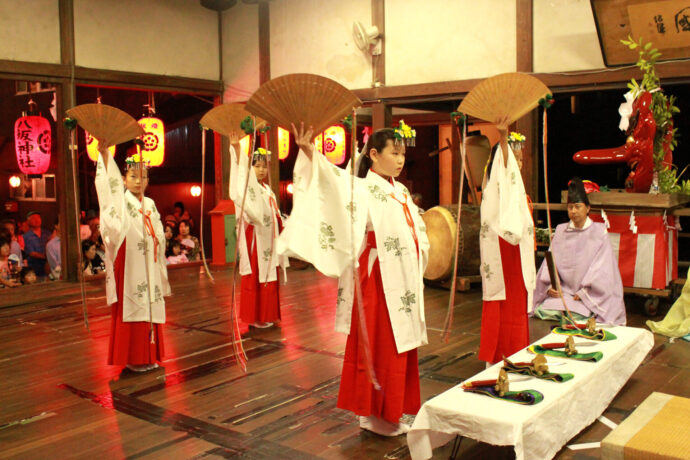
Indeed, the Yamaguchi Gion Festival, with a history of about 600 years, is another enjoyable event.
The name “Gion Matsuri(Gion Festival)” comes from the Gion Festival in Kyoto, but the Yamaguchi Gion Festival is also famous for its 600-year history.
Following in the footsteps of Kyoto’s Gion Festival, the Yamaguchi Gion Festival is held every year in late July (July 20-27) for about a week.
The festival is small, so you can watch it in a relaxed atmosphere.
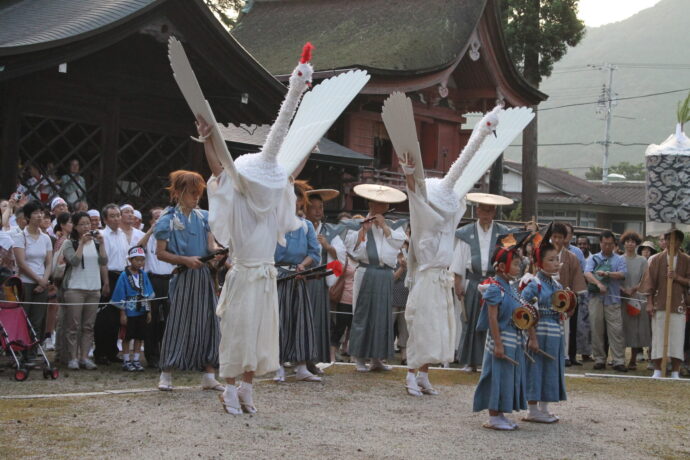
Ruriko-ji Temple
Ruriko-ji Temple is another must-see for its old buildings. It is a Sodo sect temple. The main deity is the Yakushi Nyorai (Medicine Buddha).
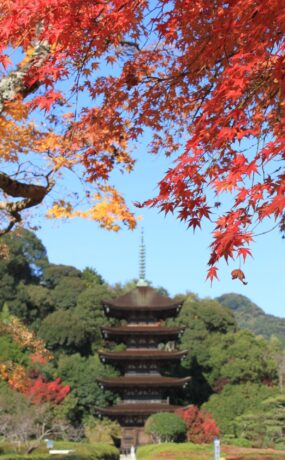
Founded in the 15th century, the temple was originally called Anyoji Temple, but was renamed Ruriko-ji Temple in 1492.
Because of the temple’s age, it houses many temple treasures, including various sutras and images.
The area around Ruriko-ji is called Kozan Park and is famous for its plum blossoms in early spring and cherry blossoms in spring.
Rurikoji’s five-story pagoda is the tenth oldest existing five-story pagoda in Japan.
The five-story pagoda is said to be one of the three most beautiful pagodas in Japan. (Together with the five-story pagoda of Daigoji Temple in Kyoto Prefecture and the five-story pagoda of Horyuji Temple in Nara Prefecture, they are considered the three most famous pagodas.)
It is a beautiful structure built in the Muromachi period (1336-1573). The five-story pagoda is 31.2 meters to the top of pagoda(Sorin, metal pinnacle).
Designated as a national treasure, the five-story pagoda is a symbol of Yamaguchi City and conveys the Ouchi culture in a profound way against a backdrop of cherry blossoms and maple trees. The pagoda is also illuminated at night from sunset to 10:00 p.m., giving it a different atmosphere and making it one of the highlights of the tour.
This is one of the most popular tourist spots in Yamaguchi City, so be sure to visit.
Name: Ruriko-ji Temple
Address: 7-1 Kozan-cho, Yamaguchi-shi, Yamaguchi
It takes about 40 minutes on foot from Yamaguchi Station.
On the way there, you may drop in at Yasaka Shrine.
During the cherry blossom season, you can enjoy the cherry blossoms in full bloom at your leisure.
Yamaguchi Yasaka Shrine
As you pass through the vertical alley lined with townhouse-style buildings, you will come to a large vermilion torii gate.
This is an old shrine built in the 16th century.
The main shrine is built in the Nikensha style, and the roof is thatched with cypress bark.
Address
100 Kamitate-shoji, Yamaguchi-shi, Yamaguchi 753-0035
Inquiries
Yasaka Shrine Office
Phone number
083-922-0083
Access
→ 20 minutes by train from JR “Shin-Yamaguchi” station
→ 20 minutes on foot from JR Yamaguchi Line “Yamaguchi Station
・30 minutes by bus from JR “Shin-Yamaguchi Station
→ 10 min. walk from “Kencho-mae” bus stop
・20 min. by car from the Ogori IC of the Chugoku Expressway
Nagato Gorge to Tsuwano
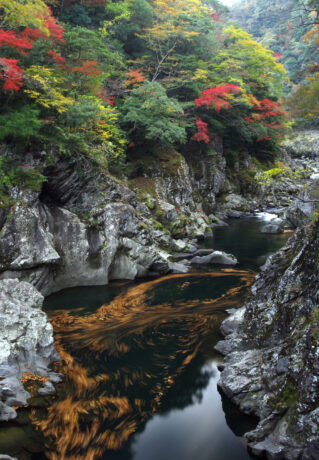
You can go to Hagi and Tsuwano via the scenic area of Nagato Gorge.
The attraction of Nagato Gorge is that it is a very scenic gorge along the Abugawa River with very clean water and adjacent rocky terrain.
The slopes of the sheer rock cliffs are thickly covered with naturally growing trees. The way the rocks grow trees like natural bonsai trees gives one a sense of the power and dynamism of nature.
Hiking trails around the canyon are well maintained, and visitors can enjoy the thrill of walking on suspension bridges.
In autumn, it is a popular scenic spot for its colorful autumn foliage.
This line is also famous for the SL Yamaguchi train that runs along the route.
Starting from “Shinzankuchi,” the route takes you to “Yuda Onsen,” “Yamaguchi,” which is filled with the fragrance of the Ouchi culture,” “Nagato Gorge,” where you can enjoy the seasonal atmosphere, and “Shinsenkou,” which is a popular tourist destination.
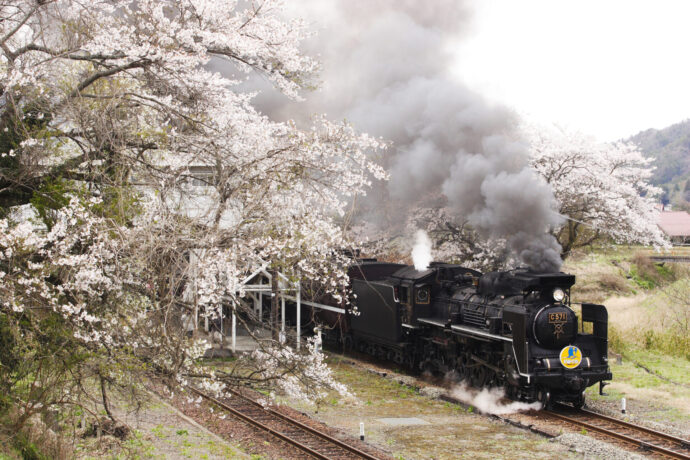
Nagato Gorge, where you can enjoy the seasonal atmosphere, and Tsuwano.
It takes about 2 hours to complete the 62.9 km long journey, and the scenery is spectacular.
Please be sure to check the departure time in advance.
Reservations are absolutely necessary.
Yuda Onsen
It takes about 40 minutes on foot from JR Yamaguchi Station. It is also one stop from Yamaguchi Station by train.
Ruriko-ji Temple is also about a 40-minute walk away.
There are day-trip hot spring facilities, but there are also footbath facilities.
Onsen are usually found in mountainous areas, but it is really nice to be able to enjoy a hot spring in the middle of town.
It is good to enjoy a hot spring for a short while.
List of footbath spots in Yuda Onsen
Yunomachi Street
Conveniently located in the middle of the restaurant district
Yuda Onsen, Yamaguchi-shi, Yamaguchi 753-0056
Bathing hours: 10:00~22:00
Free of charge
In Inoue Park
Footbath in Inoue Park where you can see the history and culture of Yamaguchi.
2-5, Yuda Onsen, Yamaguchi-shi, Yamaguchi 753-0056
Bathing hours: 10:00-22:00
Free of charge
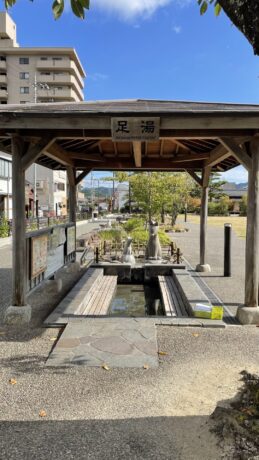
In front of Yuda Onsen Tourist Information Center
A drinking fountain is also available. Towels and drinking cups are available at the Tourist Information Center.
2-1-23 Yuda Onsen, Yamaguchi-shi, Yamaguchi 753-0056
Bathing hours: 10:00-22:00
Free of charge
In front of Yuda Onsen Station
Footbath where you can soak while watching the train and sometimes see the SL “Yamaguchi” up close!
4 Tondawara-cho, Yamaguchi-shi, Yamaguchi 753-0054
Bathing hours: 10:00-22:00
Yunokadori (footbath/handbath)
Located in an alley with a calm atmosphere, this bathhouse is equipped with two footbaths and a handbath. The hand bath was newly built in 2019 and is the only hand bath in Yuda Onsen. There are two large and two small ones.
3, Yuda Onsen, Yamaguchi-shi, Yamaguchi 753-0056
Bathing hours: 8:00-22:00
Free of charge
Various Japanese cultural experience courses at Yuda Onsen
Japanese Culture Experience Courses
Japanese culture experience ‘(Tsubaki course)
You can choose from a variety of kimonos(Japanese wear) and we will dress you in one of them. A simple hair set that goes well with the kimono is included, and hair ornaments are available for rent.
After dressing, you can enjoy natural Japanese sweets and a tea ceremony experience.
You can have a few pictures taken inside or outside the store.
Japanese experience (Kiku course)
This is a simple experience course.
An easy course to experience Japanese culture by making Japanese sweets and experiencing the tea ceremony, etc.
3000yen
Other Japanese cultural experiences
You can experience Japanese culture at LAWAKU, a Japanese cultural experience facility renovated from an old private house built more than 70 years ago.
LAWAKU
13-45 Shimoichi-cho, Yamaguchi 753-0058
Hagi Pottery Experience
– Hagi Pottery Painting Experience
– Hagi ware pottery hand twisting experience
– Ouchi Doll Painting Experience
Color is applied to local dolls called Ouchi dolls.
– Tokuchi Japanese paper folding and dyeing experience
– Making accessories using the Ouchi Nuri technique
etc. are available.
Transportation to Yamaguchi
From Tokyo, take the Nozomi train(Shinkansen bullet train ) to Shin-Yamaguchi in about 4.5 hours, and then take a local train to Yamaguchi Station in about 20 minutes.
From Fukuoka Airport, take a bus to Hakata, and from there take the Shinkansen bullet train to Shin-Yamaguchi in about 40 minutes.
From there, take a local train to Yamaguchi Station, which is about 20 minutes away.
Contact
Yamaguchi Tourism & Convention Association
2F, JR Yamaguchi Station, 2-1 Sotayu-cho, Yamaguchi-shi, Yamaguchi 753-0042
FAX:083-933-0089
E-Mail : info@yamaguchi-city.jp
Yamaguchi City Tourism Information Website Nishi-no-Kyo Yamaguchi
Yamaguchi City was introduced in the annual New York Times Tourism Destinations, 2024 edition.
It is a bit far from Tokyo, but if you are planning to visit Hiroshima or Fukuoka, you may want to add it to your itinerary.
You will love Yamaguchi City’s cozy streetscape.
Summary
Yamaguchi City was introduced in the annual New York Times Tourism Destinations, 2024 edition.
It is a bit far from Tokyo, but if you are planning to visit Hiroshima or Fukuoka, you may want to add it to your itinerary.
You will love Yamaguchi City’s cozy streetscape.
Photos by Yamaguchi Tourism & Convention Association
All copyright reserved
